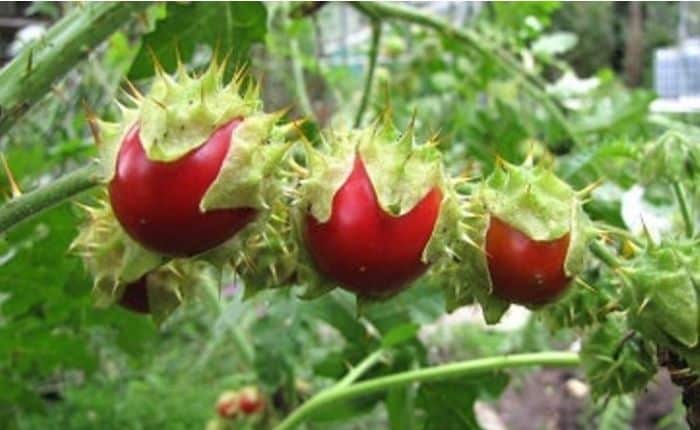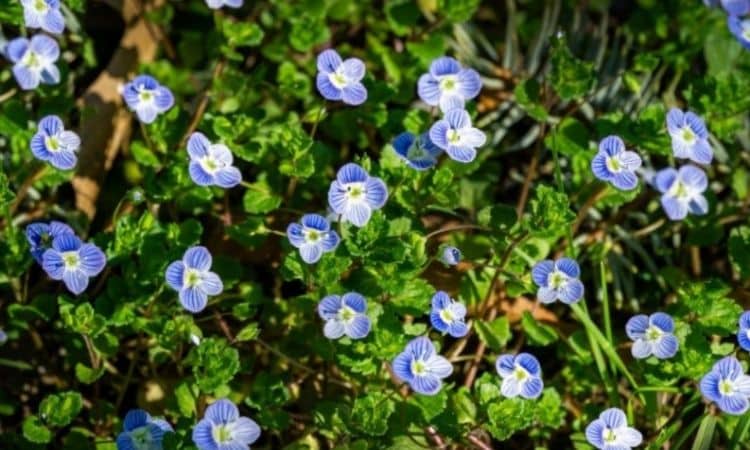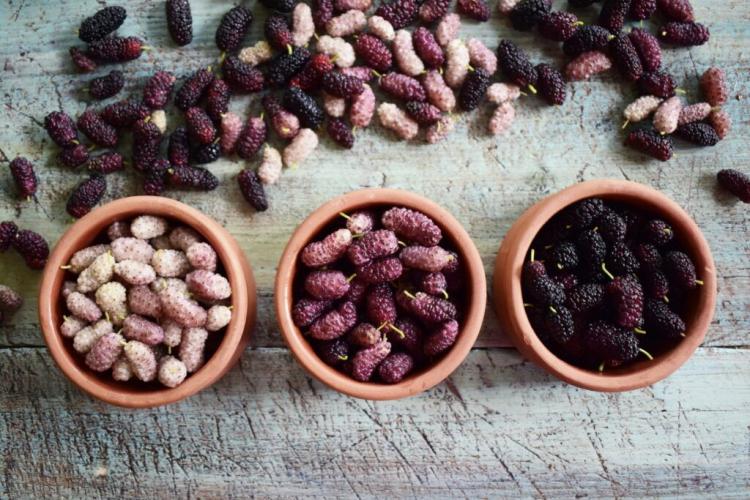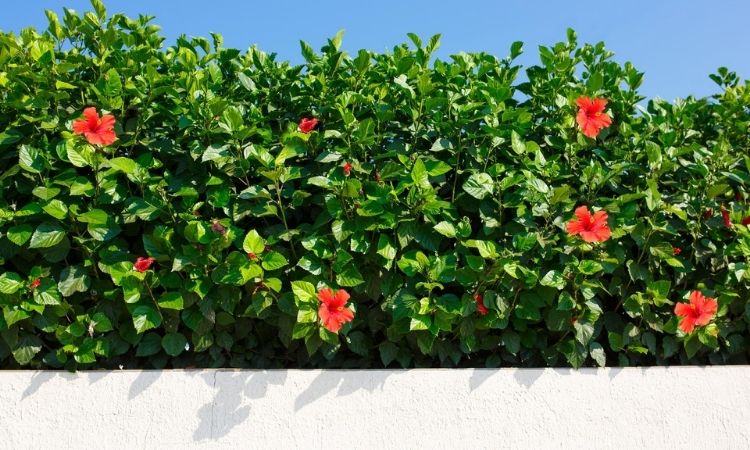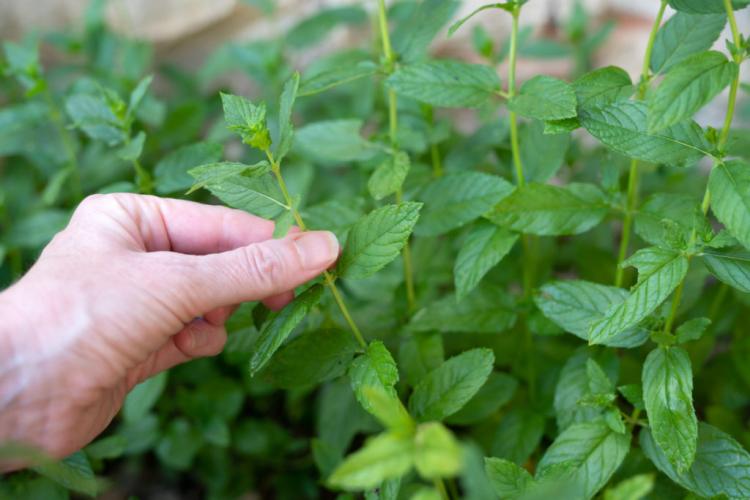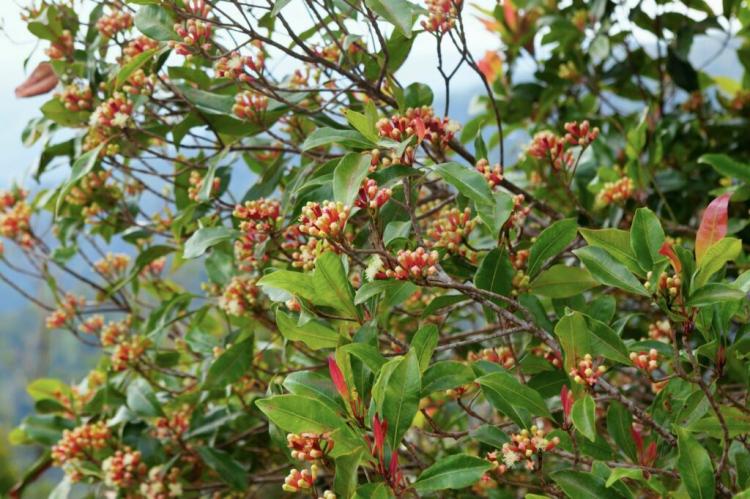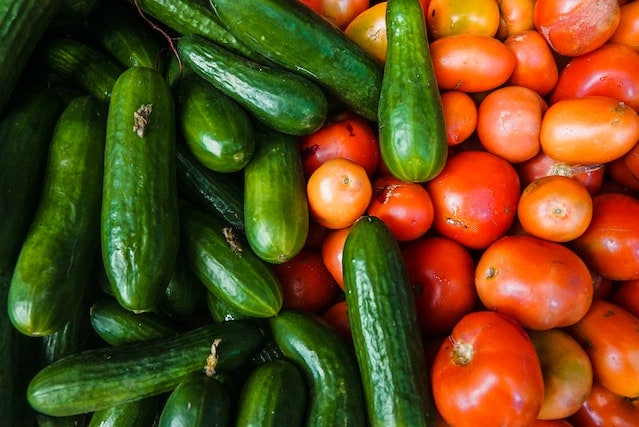Litchi Tomato – My Growing Experience
As a great fan of curiosity, last season I tried to grow an amazing plant with watermelon leaves, potato flowers, rose thorns, and tomato fruits. For the similarity of flowering with potatoes (among themselves), we nicknamed the plant “prickly potatoes”, and its scientific name of the nightshade walking. I would like to tell you about this amazing culture in my article. What is this vegetable and is it worth growing?
Plant Description
Table of Contents
Solanum sisymbriifolium is the closest relative of tomatoes, peppers, and potatoes. In milder, almost frost-free climate, it is a perennial plant, but in the middle zone, it is usually grown as a year-old. Passion fruit has many other names, such as Litchi tomato, cocoon, sticky nightshade, or sticky tomato.
In the wild, this plant used to grow in South America (Argentina, Brazil, Uruguay, and Paraguay). It has now spread throughout the world and is found in almost all parts of the world. Thus, the nightshade in abundance grows on the roadsides and wastelands in the forests of North America, it can often be seen even in the forests of Australia.
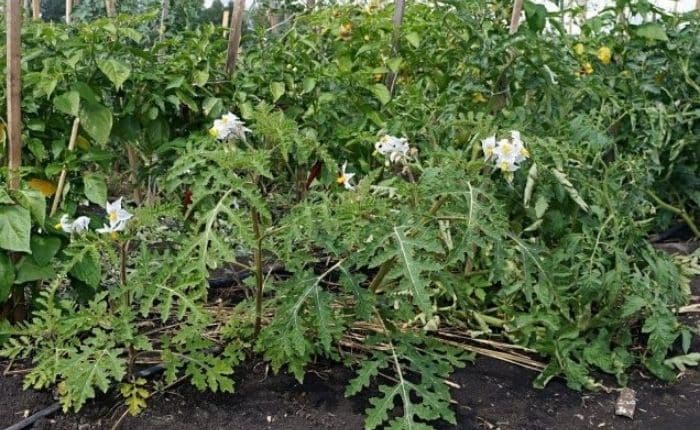 On average, the height of the bushes reaches one meter. Paschal leaves are very carved – pinnate, divided into 4-6 large shares. Individual leaf platinum can reach a maximum length of 40 cm and 25 cm wide. Stems and leaves are very prickly, as they are covered with orange-brown prickles up to 1 cm long. Leaves, fruits, and stems are sticky to the touch.
On average, the height of the bushes reaches one meter. Paschal leaves are very carved – pinnate, divided into 4-6 large shares. Individual leaf platinum can reach a maximum length of 40 cm and 25 cm wide. Stems and leaves are very prickly, as they are covered with orange-brown prickles up to 1 cm long. Leaves, fruits, and stems are sticky to the touch.
Tomato lich fruits are small berries up to 1 cm in diameter. Full of small seeds, their color is red on the outside and yellow on the inside. The fruit develops inside a prickly green shell, which reminds a tiny chestnut or an exotic litchi fruit (which is why the folk name litchi tomato). The fruit tastes sweet and sour and resembles cherries with tomato flavor.
You might so like: Planting Arnica Montana
Flowers in cyst-shaped inflorescences are very similar to potato ones – they consist of five separated flowers of white and pale blue color with yellow stands out anthers, collected in a cone, 3 cm in diameter.
How is the Litchi tomato used?
In countries with a warm climate, the plant is widely used as a hedge, because of the powerful spikes it protects against penetration of wild animals (hares, deer, etc.).
The plant is also used as a “bait trap” to protect potatoes from nematodes. The planting of walnut paslin on potato fields can help prevent potatoes from being affected by nematodes.
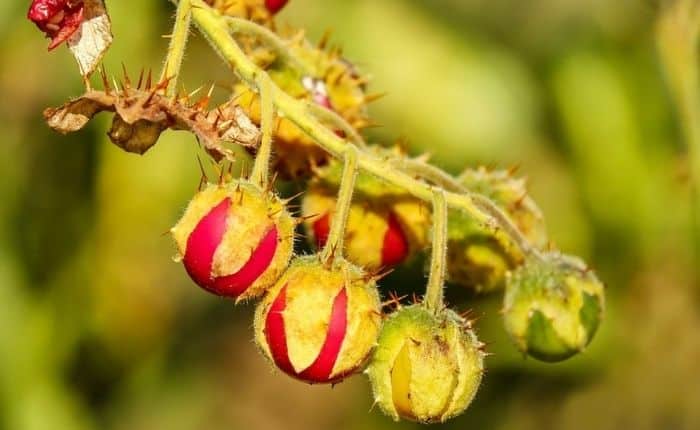 The study has shown that the nematode population has been significantly reduced in a field contaminated with nematodes thanks to the lichi tomato. This is since hatching from the egg, the nematodes try to feed on the roots of the cocoon, but those poisons to the nematodes and the pests die. Thus, the life cycle of the nematodes is interrupted, and in the field, you can again grow ordinary potatoes.
The study has shown that the nematode population has been significantly reduced in a field contaminated with nematodes thanks to the lichi tomato. This is since hatching from the egg, the nematodes try to feed on the roots of the cocoon, but those poisons to the nematodes and the pests die. Thus, the life cycle of the nematodes is interrupted, and in the field, you can again grow ordinary potatoes.
Although the lychee tomato looks very much like a potato, it has only edible berries, like a tomato. They can be eaten fresh from a bush or added to vegetable or fruit salads. Also from the berries is made a compote or jam, added to the tomato paste and juice. The harvested fruit has a short shelf life.
You might so like: Fertilizing Basil: Which Fertilizer Is The Right One?
Attention, before eating tomato lychee, you should consider the possible side effects of this vegetable:
- The daily consumption of fruits may disrupt the digestive tract;
- sometimes tomato can cause allergies in the form of skin rashes;
These nightshade berries may contain toxic alkaloids, so immature fruits with green or yellowish coloring should never be eaten.
My experience growing and eating tomato lithium
I sowed seeds in March. In size and appearance, the seeds resembled the seeds of small sorts of cherry tomatoes. The seedlings appeared very unevenly. One seedling rose in about a week, the rest of the mass seedlings I saw only after a month and a half when I had already decided that we should move.
Seedlings were developing slower than tomatoes, although externally they were very similar to them, only the leaves in the vicinity resembled reduced watermelon. After the appearance of the first pair of well-developed real leaves, I distilled the seedlings into separate high 500-gram cups. By the way, this spring my tomato seedlings suffered greatly from blackleg and other fungal diseases, but tomato seedlings showed complete resistance to all diseases.
I planted the seedlings of nightshade in the ground together with tomatoes in the middle of May. There are reports that tomato litas are very cold-resistant and tolerate even negative temperatures down to -5 degrees, and they can be planted in the ground even in April.
At the time of planting, tomato litas was half as low as tomatoes. But in June they began to develop rapidly and later reached a height of 60-70 centimeters. As well as indeterminate tomatoes, I formed nightshades in one or two stems, with time the bushes also had to be tied. In the vegetable garden, my mother-in-law’s plants grew freely and turned out to be very bushy.
The flowering of this type of nightshade is identical to the flowering of potato varieties with white flowers, for which we called such nightshade “prickly potatoes” among ourselves. However, such flowers smell very unpleasant, like the smell of rotting raw meat. But such a specific fragrance does not cause any problems, because it is so weak that it is not felt at all even at close range (unless you deliberately smell the flower closely). Blossoming lasted all summer.
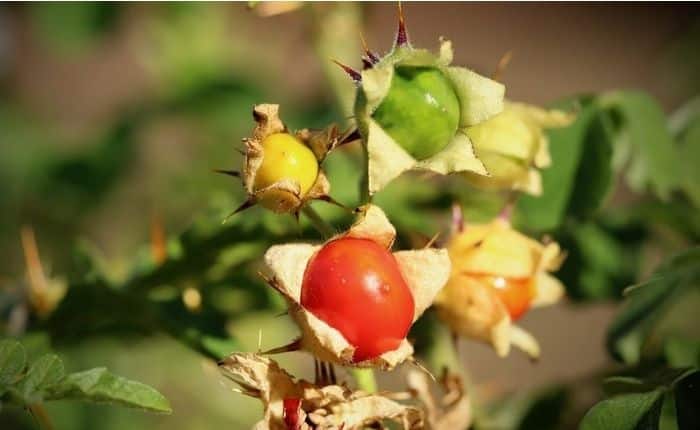 The seedling of the passerine has no thorns, and I observed only beautifully carved leaves in the seedlings. I had to wait for a very long time for my “prickly cherry” to become prickly, but I would not notice the presence of spikes for a long time, until one day I stuck my hand on them. The thing is that the spikes in the nightshade are not located as in the usual prickles, such as thistle, on the edge of the leaf. They are on the veins of the leaf plate, both on the outside and the backside. The stem of tomato lithium is also covered with small and large spikes.
The seedling of the passerine has no thorns, and I observed only beautifully carved leaves in the seedlings. I had to wait for a very long time for my “prickly cherry” to become prickly, but I would not notice the presence of spikes for a long time, until one day I stuck my hand on them. The thing is that the spikes in the nightshade are not located as in the usual prickles, such as thistle, on the edge of the leaf. They are on the veins of the leaf plate, both on the outside and the backside. The stem of tomato lithium is also covered with small and large spikes.
You might so like: Russian Sage Vs Lavender
Young seedlings of this nightshade are not prickly, although they already have small spikes on the leaves and stems. They are so thin and soft that they look more like pubescence, like tomatoes. The spikes become harder and can already be pricked when the stem reaches a thickness of 5 millimeters. With time, when the bush gets even more sweaty, the spikes will be massive and visible from a distance, so there is no doubt that we are left with a prickle.
Although the seeds of the Tomato Lich were sown quite early (in early March), the harvest could only be harvested in mid-September (by this time the berries had blushed and the prickly husk had dried up). Based on this, I concluded that this crop should have been sown even earlier.
Pests Litchi tomato
Wildflower Oyster proved to be a completely problem-free plant, it grew on a bed together with traditional tomatoes and received the same supplements as they were, watering was regular through a drip band. Individual tomato bushes this season suffered from typical Paslenov’s diseases, but the tomato face seemed to have nothing.
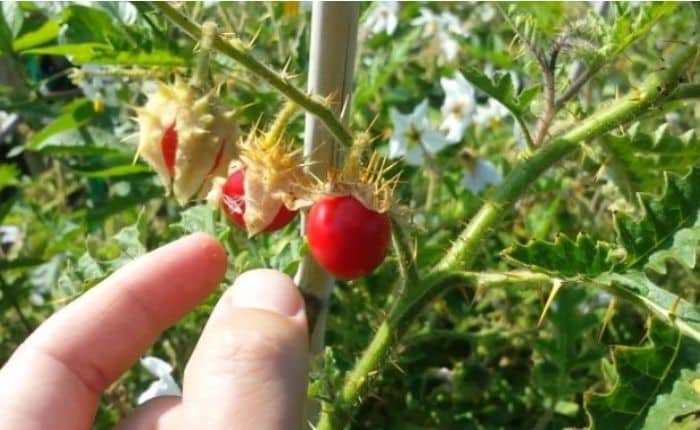 The only problem I faced was the Colorado potato beetle. Moreover, at my dacha, where there are no potatoes, neither we nor our neighbors, there was not a single bug in the tomato litchi. But at my mother-in-law’s vegetable garden, where potatoes are grown in bulk, at the end of summer, powerful bushes of such a Paslena were completely eaten by the Colorado potato beetles along with berries, and she was unable to try the harvest.
The only problem I faced was the Colorado potato beetle. Moreover, at my dacha, where there are no potatoes, neither we nor our neighbors, there was not a single bug in the tomato litchi. But at my mother-in-law’s vegetable garden, where potatoes are grown in bulk, at the end of summer, powerful bushes of such a Paslena were completely eaten by the Colorado potato beetles along with berries, and she was unable to try the harvest.
Another peculiarity of tomato lich, which I noticed, is that on its stems you can see the bodies of dead small insects, which either just stuck because all parts of the plant are “sticky” or caught on spikes. This observation allowed me to conclude that the cocoon is also partially a predator, as most representatives of the Paslenov family, and receives additional nutrients from the insect bodies.
As for the taste of fruits, they did not remind me at all of the cherries, although something fruity was present in them. There were acid and sweetness in them, and in general, the taste of berries was pleasant, although I was afraid to eat a lot.
